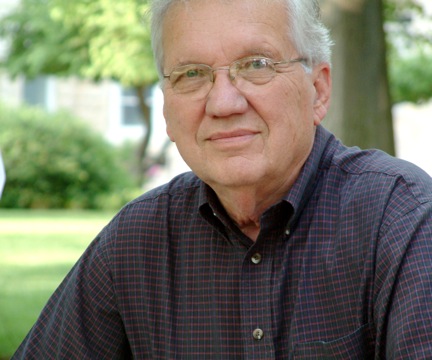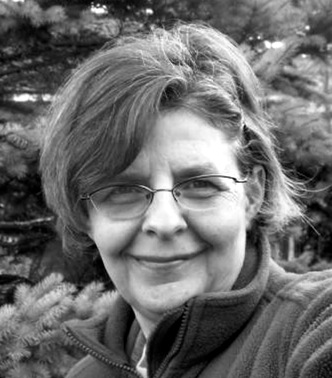Sylvia Gross Bubalo
In This Issue:
Art is produced when inspiration meets formal constraint. Some artists, however, must deal with more than formal constraints when they strive to give form to their work. In the case of the two Mennonite women artists who are the subject of this double issue on “Enabling Constraints”—Sylvia Gross Bubalo and Christine Wiebe—those constraints included chronic illness, gender, and the restrictions of their Mennonite contexts. Because of size limitations, the issue will be published in two parts. The first part, “The Prophetic Art of Sylvia Gross Bubalo,” is published below as the September issue of the Journal of the Center for Mennonite Writing. The second part, “Writing as Spiritual Journey: The Poetry and Art of Christine R. Wiebe,” will be published in a special October issue.
Sylvia Gross Bubalo (1927-2007) and Christine Wiebe (1954-2000) did not know each other. They were members of different generations and came from different branches of the Mennonite family—Bubalo from the Mennonites and Wiebe from the Mennonite Brethren. Bubalo was married to a kindred spirit, the artist Vladimir Bubalo; Christine remained single, though she sought out kindred spirits throughout her short life. Both women were poets and artists, although Bubalo’s formal training was in visual art and Wiebe’s in poetry. Yet the “enabling constraints” of their journeys as artists, and their understanding of art as a spiritual practice, resonate with each other.
Both women understood their art as a spiritual vocation. Both struggled with the restrictions of the Mennonite Church at a time when it was wary of embracing artistic gifts as an expression of spirituality and cautious about the leadership roles of women. Both women coped with severe physical disabilities, Sylvia with muscular dystrophy and Christine with lupus. Both were drawn to mystical expressions of faith—Sylvia through what appears to have been ecstatic religious visions, and Christine through her embrace of the Catholic faith. Both artists articulate a longing for spiritual practice lacking in their Mennonite experience, and both returned to the Mennonites at the end of their lives. Their verbal and visual art is their gift to the faith community that formed them and their artistic concerns continue to be of relevance today. By bringing their work to a wider circle of readers and viewers, we hope to enlarge its audience so that it can continue its transformative work. Look for “Enabling Constraints II: Writing as Spiritual Practice in the Life of Christine R. Wiebe” on or about October 18, 2010.
In “The Prophetic Arts of Sylvia Bubalo,” we meet the artist through her own words and images as well as through the reflections of those who knew her in life or who have responded to her work. This has been made possible by the generosity of our contributors as well as by the meticulous care with which her brother, the historian and scholar Leonard Gross, has catalogued and curated her paintings and poetry. Sylvia’s grandniece, Miriam Kirchner Gross, assisted with the selection and arrangement of the poetry. Sylvia’s “Artist Statement” serves to introduce her intention and vision to the reader. “Point of Entry,” Sylvia’s autobiography in poetry, along with related paintings and drawings, reveals connections between her artistic vocation, her faith, and the Mennonite community. Bob Regier, a visual artist and friend of Sylvia and Vladimir Bubalo, offers a reflection on the days when all three of them were students at the Art Institute of Chicago. John Blosser, a visual artist and Professor of Art at Goshen College, engages Sylvia in conversation in a rare interview. Dawn Ruth Nelson, author ofA Mennonite Woman: Exploring Spiritual Life and Identity, writes about her recent discovery of Sylvia’s visual testimony and how it spoke to her own spiritual journey as a Mennonite woman. Reproductions of Sylvia’s artwork are interspersed throughout the essays and poetry.
Sylvia’s vibrant engagement with Bible stories, reminiscent of the Jewish practice of Midrash or wrestling with the text, reveals a living faith that demanded her full resources as an artist. On the other hand, she was an outspoken critic of what she considered to be ossified practices and traditions among the Mennonites of her Pennsylvania community, especially those pertaining to women. In “Point of Entry” she recalls:
"So in baptism they said: 'Do you choose Christ and / (or) the church?' And she said: 'I choose Christ. (I can't handle the church).'"
Sylvia’s painting, “La Paloma,” portrays a stylized one-eyed woman in a flowered conservative Mennonite dress and an army helmet, sitting atop a dismantled weapon, her axe on the ground, and a dove flag, whose pole rises from the gun. One version of this painting includes the word “coraje,” which is Spanish for "rage.” According to medical anthropologist Marcia Good, women are said to have "coraje” . . . to have “nerve” . . . an expression that blends fury and courage to express an effort to surmount injustice.
Yet, as noted in a letter to scholar Reinhild Kauenhoven Janzen, it was the Christ-like spirit of many Mennonite men and women in the church, as well as the enthusiasm of her newly converted husband, the artist Vladimir Bubalo, at having discovered in the Mennonites a Church that preached the gospel of peace, that emboldened and sustained Sylvia in her efforts to conduct a ministry of art in conversation with the church. Sylvia Bubalo wrote to Janzen: “Both my grandmother and my parents and certain singular men and women taught or emanated the Christ-love. It stopped me short of rage, giving me resolve instead to become one of the voices of the same Passionate Love.” (“Art as an Act of Faith: Sylvia Gross Bubalo,”The Mennonite Quarterly Review, July 1998, 389.)
The Mennonite Historical Library at Goshen College has accepted the gift of Sylvia Bubalo’s paintings, the first major collection by an artist in its holdings, and the Archives of the Mennonite Church USA, her writings and papers.
Ann Hostetler, Guest Editor
In this issue:
-
0
read more

Artist’s Statement
by Sylvia BubaloMay 11, 1973
-
0
read more

A Conversation with Sylvia Bubalo
by John BlosserOctober 29, 1992
-
0
read more

Point of Entry
by Sylvia BubaloSeptember 2010
-
0
read more

Remembering Sylvia
by Bob RegierJuly 2010
-
0
read more

A Response to the Art of Sylvia Gross Bubalo
by Dawn Ruth NelsonAugust 2010
-
0
read more

Selected Poems
by Sylvia BubaloThe major long poem, “From the Turquoise Sky 21st Century You,” opens the selection. It is followed by a selection of shorter work, chosen from a manuscript of over 500 pages by Miriam Kirchner Gross. The contemporary epic, “A History of St. Charlie’s Chicago,” concludes this selection.—AH
-
1
read more

Sylvia Gross Bubalo, Artist and Poet, Born into a Mennonite Tradition
by Leonard GrossSeptember, 2010